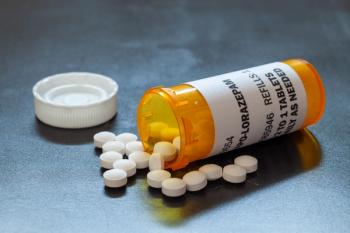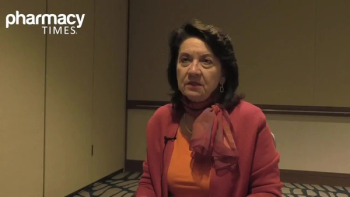
Get the Dirt on DIR Fees
Direct and indirect remuneration fees can cause pharmacies to spend more on stocking and dispensing medications.
Direct and indirect remuneration (DIR) fees are increasingly getting attention from pharmacists and patients. This isn’t really surprising though, since these controversial charges have been causing pharmacies—particularly independent pharmacies—a lot of grief and indirectly causing patients to spend more out-of-pocket on their medications.
Whether you’re a professional pharmacist, a student who wants to study pharmacy, or a patient who needs medication on a regular basis, you need to know more about these fees and understand how they can impact your finances and your future.
WHAT ARE DIR FEES?
The Centers for Medicare and Medicaid Services (CMS) works with private insurers—who are also called Part D sponsors—to provide prescription drug benefits to people who are under Medicare. The CMS then pays Part D sponsors for the services they provide.
This process is not exactly clear-cut, in that the CMS simply pays what it owes to the insurers. Payments to Part D sponsors are predetermined through a yearly bidding process, during which the sponsors submit an estimate of the amount they need to deliver services to Medicare patients.
However, the insurers and/or their pharmacy benefits managers (PBMs) normally receive rebates from the drug manufacturer, as well as other concessions after the point-of-sale, which means they cannot include these rebates in their initial bid. These rebates are called direct and indirect remuneration.
Part D sponsors are required to declare their DIR to the CMS at the end of the payment year to pass on the savings to the agency. The CMS then factors the DIR fees into their calculation for their final payments to Part D sponsors.
It’s important to note, though, that DIR fees are not just present in the CMS-insurer relationship. Most, if not all, Part D sponsors also charge these fees to the pharmacies they work with.
Usually, the charges are based on performance-based metrics, leading many pharmacists and pharmacy owners to complain that the system is flawed and unfair, especially to
PROS AND CONS
DIR fees come with both advantages and disadvantages. Naturally, Part D insurers and PBMs insist that these fees help reduce healthcare costs, both on the government and individual level. However, experts point out that the drawbacks brought about by the fees actually overshadow their benefits. Let’s take a closer look at these pros and cons.
PROS
Reduce overall program expenses
Part D sponsors and PBMs negotiate rebates from drug manufacturers, as well as from pharmacies, and pass on these rebates to the CMS. This can help reduce government expenses on healthcare and lower individual beneficiary premiums. The CMS acknowledges that rebates have helped keep member premiums low, even when drug prices have increased in general.
Improve pharmacy performance
Private insurers insist that charging DIR to pharmacies based on their performance helps improve the services provided by these businesses. These, in turn, ensure that patients receive the best possible care from their local pharmacists and have professional guidance on how to properly take their medication.
CONS
Increase out-of-pocket costs
DIR usually comes into effect after the point of sale. This means that customers don’t enjoy the rebates at the actual moment that they purchase their medication, and they’ll still end up spending a large amount.
This is especially true for drugs that have high prices and high DIR, even if they result in large rebates at the end of the year, these discounts will still not be enjoyed by individual customers during the point of sale.
In fact, higher point-of-sale prices can result in higher consumer expenses, since cost-sharing is usually calculated as a certain percentage of the drug’s list price. For instance, if a Part D sponsor chooses a drug that costs $100 over a drug that costs $50, a patient with a 10% cost-sharing obligation will have no choice but to pay $10—when he could have paid only $5.
Increase total Medicare costs in the long run
Higher cost-sharing expenses don’t only impact individual customers—they can also cause Medicare’s expenses to increase over time. This comes from the fact that as patients pay more out of their own pocket, they get nearer to the catastrophic coverage phase.
Once they reach this phase, Medicare is legally obligated to shoulder up to 80% of their healthcare expenses. While this is good news for patients who are juggling both illness and money problems, it can also put the CMS, and even the entire government, into financial distress.
Reduce insurer financial obligation
Remember, the CMS factors DIR when calculating its payments to Part D sponsors. With higher rebates, private insurers end up having lower financial obligations while burdening customers with higher out-of-pocket expenses and pushing them into the catastrophic coverage phase.
EFFECTS ON PHARMACIES
DIR fees don’t only impact the CMS and individual patients, they also have a negative effect on pharmacies. Specifically, they cause pharmacies to spend more on stocking and dispensing medications, so some businesses barely break even and others end up losing money. Since the fees are charged retroactively, they make it difficult for pharmacies to budget their resources and project their future growth.
The problem with DIR on the pharmacy level is that Part D sponsors use it not to reward high performers, but to penalize pharmacies. Even worse, many quality metrics used to grade pharmacies are murky, so owners and staff don’t even know what they’re aiming for.
Other guidelines are considered to be unfair and/or difficult to accomplish. Some private insurers, for example, use claims data as the sole basis of evaluating adherence without even looking at medical records.
This can lead to misleading results, since there are many factors that influence a patient’s adherence to his medication schedule. Someone who gets hospitalized for a week will have a week’s worth of unfilled prescriptions, which can cause his local pharmacy to fail in terms of adherence, when in fact the patient did take the medications when he was in the hospital.
DIR affects almost all pharmacies, but they have a bigger effect on
FINAL THOUGHTS
DIR fees have their place in public healthcare. However, the CMS needs to work with pharmacies, patients, insurers, and PBMs to make sure that DIR is not abused and that everyone pays their fair share to keep the healthcare system going.
Joshua Pirestani is the president and founder of the
Newsletter
Stay informed on drug updates, treatment guidelines, and pharmacy practice trends—subscribe to Pharmacy Times for weekly clinical insights.

















































































































































































































